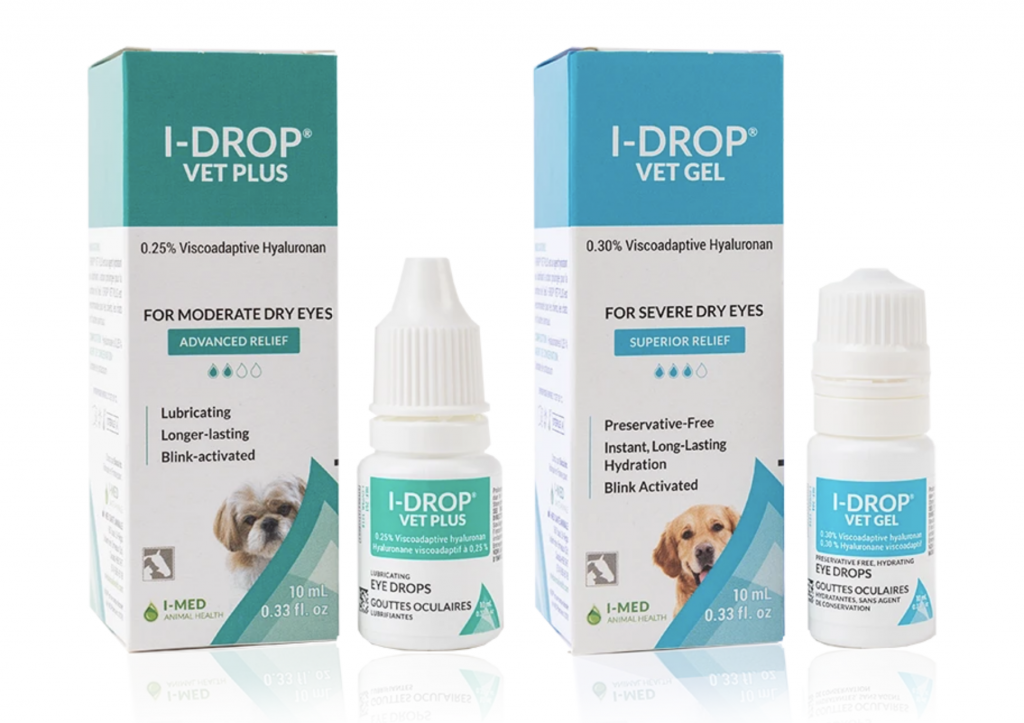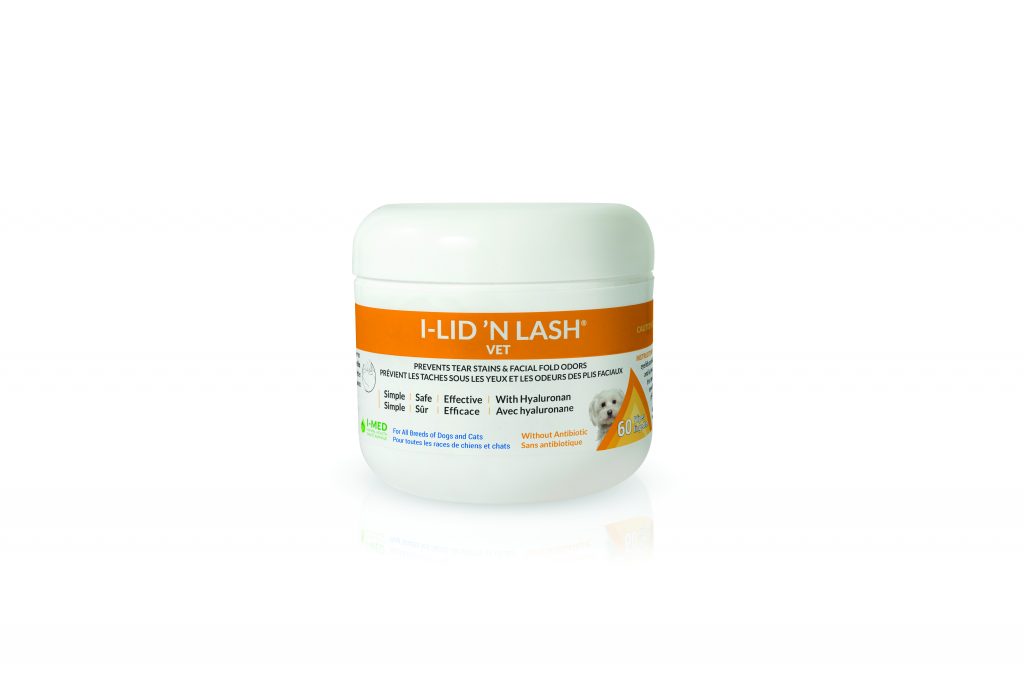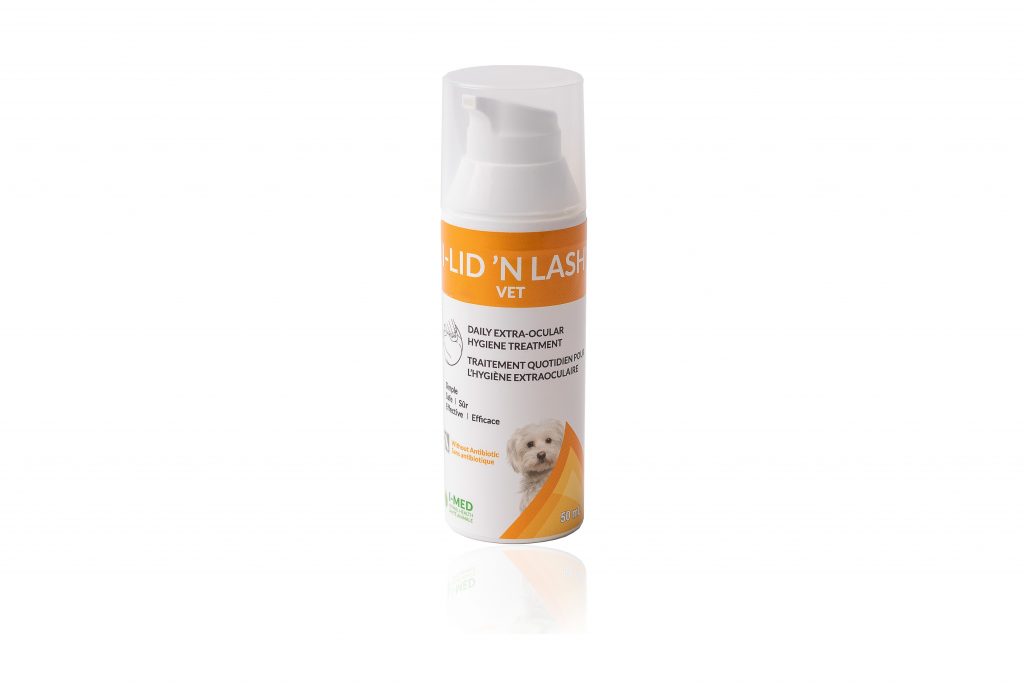Help! My dog’s eyes are…
Do dogs get dry eye? Do dogs get cataracts? You bet!
How do I fix my dog’s tear staining?
If you ever wondered if cats and dogs get common eye problems like humans, you’re correct. In fact, there are board-certified veterinary ophthalmologists who fix eye problems in pets as their full-time job!
So, if you have a dog or cat who has discharge from their tears – whether it’s thick clear stuff versus greenish colored, keep on reading. Your dog may have eye problems like dry eyes (KCS), cataracts, or even more mild things like tear staining. We’ll focus on just dogs today.
Signs of common eye problems in dogs include:
- Discharge from the eye (e.g., greenish, yellow, or cloudy white discharge)
- Extra “pink” in the inside corner of the eye (which may be the third or extra eyelid that dogs have or thickening or inflammation of the conjunctiva)
- Excessive tearing
- Brown staining of the fur around the eyes
- Squinting
- A discoloration or lack of “clearness” on the surface of the area (e.g., cornea)
- Keeping the eye closed
- Eye pain or discomfort
- Pawing at the eye
- And so much more…
When in doubt, you want to get to your veterinarian – or even emergency veterinarian with any eye problems, as some are emergencies (like glaucoma, corneal ulcers, lens luxations, etc.). If the problem is acute (like it just happened or has been going on for 2-3 days), you need to get in ASAP. If your dog has more chronic eye problems (like tear staining), a regularly scheduled vet appointment is still important for some eye test.
More importantly, that’s because some specific eye tests need to be done. These will include a Schirmer tear test (STT) to test the tear function of your dog’s eye – normal is > 15, and anything less than that means your dog has dry eye – otherwise known as keratoconjunctivitis sicca (KCS). Other tests may include a fluorescein stain (which, I’ll attest that I can never spell correctly in my veterinary medical records) to see if your dog has abrasions or ulcers on the surface of their eye. Sometimes, we’ll even check your dog for glaucoma using a Tonometer (to check the intraocular pressure with your dog’s eye).
Dry eye (Keratoconjunctivitis sicca (KCS)
As I was personally diagnosed with dry eye (from 20+ years of wearing contact lens and following Lasix eye surgery), I can attest that dry eye is uncomfortable to down right painful at times. And believe it or not, but the treatment for dry eye in humans was discovered by a veterinarian! (Go, vets!) Treatment for dry eye in dogs typically needs lifelong treatment with Optimmune (cyclosporine) (a prescription medication) and artificial tears to keep the eyes moist and lubricated. BTW, Optimmune is the veterinary version and the human version is called Restasis.
Dry eye can affect all breeds of dogs but it’s much more common in predisposed breeds. Look out for any signs of eye irritation. Commonly affected breeds include the Cavalier King Charles Spaniel, English Bulldog, Lhasa Apso, Pug, Shih Tzu, and West Highland White Terrier. However, regardless of breed, any dog can be affected with KCS.
Signs of keratoconjunctivitis sicca (KCS) in dogs specifically include redness, irritation, pain, swollen eyes, or discharge in your dog’s eyes. Dogs may also squint or blink excessively or even hold the eyes shut. As a veterinarian, the #1 sign I see consistent with KCS in dogs? A thick, yellowish, mucoid discharge in both eyes – this develops because your dog’s eyes have a decreased ability to produce the aqueous (watery) component of the tear film. As a result of untreated KCS, corneal ulceration can occur, resulting in worsening pain and potentially blindness!
Being that I have dry eye myself, I’ll admit… I’ve been using a dog version of eye drops to treat my own dry eye (Yes, it’s sterile!).
With dry eye, keep in mind, you typically can’t over-lubricate! Typically adding these lubricating drops every 4-6 hours is very helpful, but if you can’t do that, even every 8 hours will help!

I-DROP® VET PLUS or I-DROP® VET GEL. There are two formulations, and they both come in 10 mL (3 ounce) sterile bottles. These are long lasting artificial tears for moderate to severe dry eyes and contain hyaluronic acid (which you probably heard of in expensive skin creams. Hyaluronic acid helps binds to water to help retain moisture, keeping the eyes hydrated for longer.).
- I-DROP® VET PLUS is best suited for mild cases of dry eyes or for shorter periods of use (1-2 months) and contains 0.25% viscoadaptive hyaluronan (HA) with added glycerin.
- I-DROP® VET GEL is best suited for all cases of dry eye but are better for moderate to severe cases that require long-term use. It’s also better for dogs that have sensitive eyes. This one is specifically preservative-free and contains 0.30% viscoadaptive hyaluronan (HA) with added glycerin. With LONG term exposure, even my eyes are sensitive to the preservatives. This bottle features a one-way valve that dispenses one sterile dosed drop at a time and eliminates any chance of the product re-entering the bottle.
Tear staining, eye crusts, or facial fold problems
OK, if you have a white-furred, small dog or a Yorkshire terrier or a Chihuahua, read on. This part is for you. If you notice brown staining around your dog’s “tear duct,” it’s not normal. Personally, I recommend asking your groomer (or veterinary staff) to help gently shave off the existing stained fur near the eyes (with a special tiny clipper) for best results on removing this tear stained-fur.
Well, you can use I-LID ’N LASH® VET safely and effectively to prevent tear stains & facial fold odors. It’ll also help lessen the severity of pre-existing stains when used. This product is completely safe to use it does not contain any harsh chemicals or antibiotics, and comes as convenient, pre-soaked wipes (60 per jar) or a 50 mL pump. Both the pump and wipes should be used within 6 months of opening.


OK, in full disclosure, I use the pre-soaked wipes for my own blepharitis!
How do you use it? Just wipe once a day consistently to remove stains and odors – there’s no need to rinse it off. This will also help you remove eye debris if you let the product soak into the fur around the eyes for about 5-10 minutes. You don’t need to rinse it off! It is important to note that I-LID ’N LASH® VET does not remove tears stains, it prevents them, allowing for new fur to grow in clean and stain-free within 7-10 days.
This product is completely safe to use. There are no issues with getting this product in your pet’s eye, mouth or paws, as it won’t harm your dog if it’s accidentally ingested.
When in doubt, your dog’s eyes are the windows to their soul! Take good care of them! When in doubt, check with your veterinarian for an eye exam and correct treatment before starting any eye medication! #ad



When I started reading your personal story of Seamus’ diagnosis of SCC I swear I was reading my Gracie’s story – Gracie is our beautiful 16 year old cat. Not only did their stories match up, from the chronic renal failure to the complete loss of interest in their appetites, they look EXACTLY ALIKE!!! I almost fell out of my computer chair when I saw Seamus’ picture!! As I continued reading your story my eyes filled with tears – I don’t know any other “human owners” that have have a similar story.
About 6 months ago Gracie was diagnosed with the beginning stages of renal failure and was switched over to a special kidney food and put on a homeopathic renal support pill that we give her 2x daily. Every three months we take her in for blood work to monitor her kidney function. About 2 months ago we noticed she was making these odd facial movements and pawing at the right side of her face. Then about 2 weeks ago I noticed that her breath smelled horrible which was very unusual. Then within days she stopped eating and drinking. We took her in to our vet immediately and we were told that she has at least 3 abcessed teeth that needed to be removed. the day she had her extractions, the dental vet saw that she had a mass on her lower right jaw that had already eaten into the bone. It caused the teeth to become mobile and abscessed. They took a biopsy and were are currently awaiting the results to find out what type of cancer she has. Regardless of the type, Dr. said any type of cancer in the head of a cat is bad news. She goes back Thursday for a follow-up and to get the biopsy results. She’s on a 10-day course of antibiotics, and 2 2 different kinds of pain meds to be given after the previous one is finished (Buprenorphine and then Gabapentin). I’m going to ask him to switch out the Gabapentin because when I give it to her, she becomes so loopy and sleepy which is so strange because I read that the Buprenorphine is actually stronger yet she handled that one like a champ. Throughout all of this, I realize that given her age, the chances of it being SCC, and the progression of the tumor that Dr. Bieber will most likely recommend that we just keep her as comfy as we can now. I just love her so much and it’s so hard for me to imagine my life without her so when I read your story I had to reach out because only someone going through the same thing with their cat would understand how my husband and I are feeling.
Thank you for sharing your story – and I’m sorry you and Seamus had to go through this difficult time.
I’m so, so sorry to hear that you had to go through the same thing. 🙁 Grey tabbies are the best, and he’ll always be my first love. Thinking good thoughts for your kitty. Best, Dr. Justine Lee